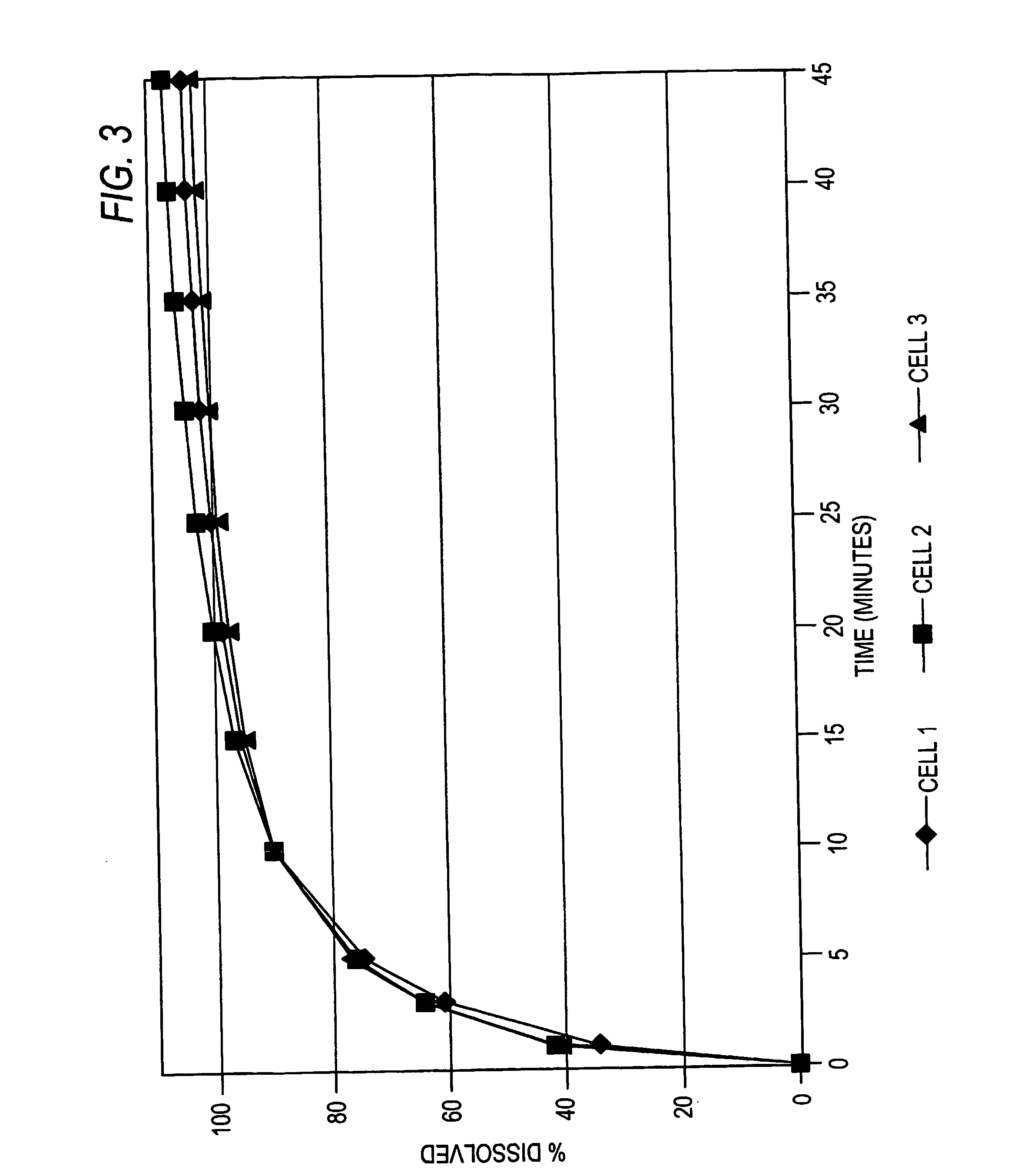Functional powders for oral delivery
a powder and functional technology, applied in the direction of pharmaceutical product form change, inorganic non-active ingredients, immunological disorders, etc., can solve the problems of adversely affecting the release, stability and bioavailability of active ingredients, adverse effects on the release, and the addition of excipients, so as to minimize the pulmonary aspiration of particles, improve the functionality of the formulation, and improve the mouthfeel
- Summary
- Abstract
- Description
- Claims
- Application Information
AI Technical Summary
Benefits of technology
Problems solved by technology
Method used
Image
Examples
example 1
Controlled-Release Propranolol HCl
Step 1: Granulation of Propranolol HCl
Prior to commencing granulation of the Propranolol HCl, the vessel of the MP Micro is pre-warmed by heating at 70° C. for 15 minutes with a nominal airflow of 6.0 m3 / Hr. 76 g of Propranolol HCl and 4 g of PVP K-30 is added to the vessel and the process temperature set to 70° C. The airflow is then increased until the product is fluidised. Once a constant temperature is achieved within the powder bed, spray granulation of the product is commenced by the introduction of distilled water as the granulation fluid. An atomising pressure of 2 bar is used.
Once the material is granulated the addition of the granulation fluid is stopped and the powder bulk is dried. The end point of the drying process is indicated by a constant temperature within the powder bed. At this point the temperature of the inlet air is reduced to 25° C. and the bulk material removed. Once cooled the material is screened through a 250 micron...
example 2
Enteric Coated Indomethacin
Step 1: Granulation of Indomethacin
Before commencing the granulation of the Indomethacin, the vessel of the MP Micro is pre-warmed by heating at 70° C. for 15 minutes with a nominal airflow of 6.0 m3 / Hr. 76 g of Indomethacin and 4 g of PVP K-30 is added to the vessel and the process temperature set to 70° C. The airflow is then increased until the product is fluidised. Once a constant temperature is achieved within the powder bed, spray granulation of the product is commenced by the introduction of distilled water as the granulation fluid. An atomising pressure of 2 bar is used.
Once the material is granulated, the addition of the granulation fluid is stopped and the powder bulk is dried. The end point of the drying process is indicated by a constant temperature within the powder bed. At this point the temperature of the inlet air is reduced to 25° C. and the bulk material removed. Once cooled the material is screened through a 250 microns sieve and a...
example 3
Controlled-Release Clarithromycin
Step 1: Granulation of Clarithromycin
Prior to commencing granulation of the Clarithromycin, the vessel of the MP Micro is pre-warmed by heating at 70° C. for 15 minutes with a nominal airflow of 6.0 m3 / Hr. 76 g of Clarithromycin and 4 g of PVP K-30 is added to the vessel and the process temperature set to 70° C. The airflow is then increased until the product is fluidised. Once a constant temperature is achieved within the powder bed, spray granulation of the product is commenced by the introduction of distilled water as the granulation fluid. An atomising pressure of 2 bar is used.
Once the material is granulated the addition of the granulation fluid is stopped and the powder bulk is dried. The end point of the drying process is indicated by a constant temperature within the powder bed. At this point the temperature of the inlet air is reduced to 25° C. and the bulk material removed. Once cooled the material is screened through a 250 micron sie...
PUM
| Property | Measurement | Unit |
|---|---|---|
| Length | aaaaa | aaaaa |
| Length | aaaaa | aaaaa |
| Length | aaaaa | aaaaa |
Abstract
Description
Claims
Application Information
 Login to View More
Login to View More - Generate Ideas
- Intellectual Property
- Life Sciences
- Materials
- Tech Scout
- Unparalleled Data Quality
- Higher Quality Content
- 60% Fewer Hallucinations
Browse by: Latest US Patents, China's latest patents, Technical Efficacy Thesaurus, Application Domain, Technology Topic, Popular Technical Reports.
© 2025 PatSnap. All rights reserved.Legal|Privacy policy|Modern Slavery Act Transparency Statement|Sitemap|About US| Contact US: help@patsnap.com



